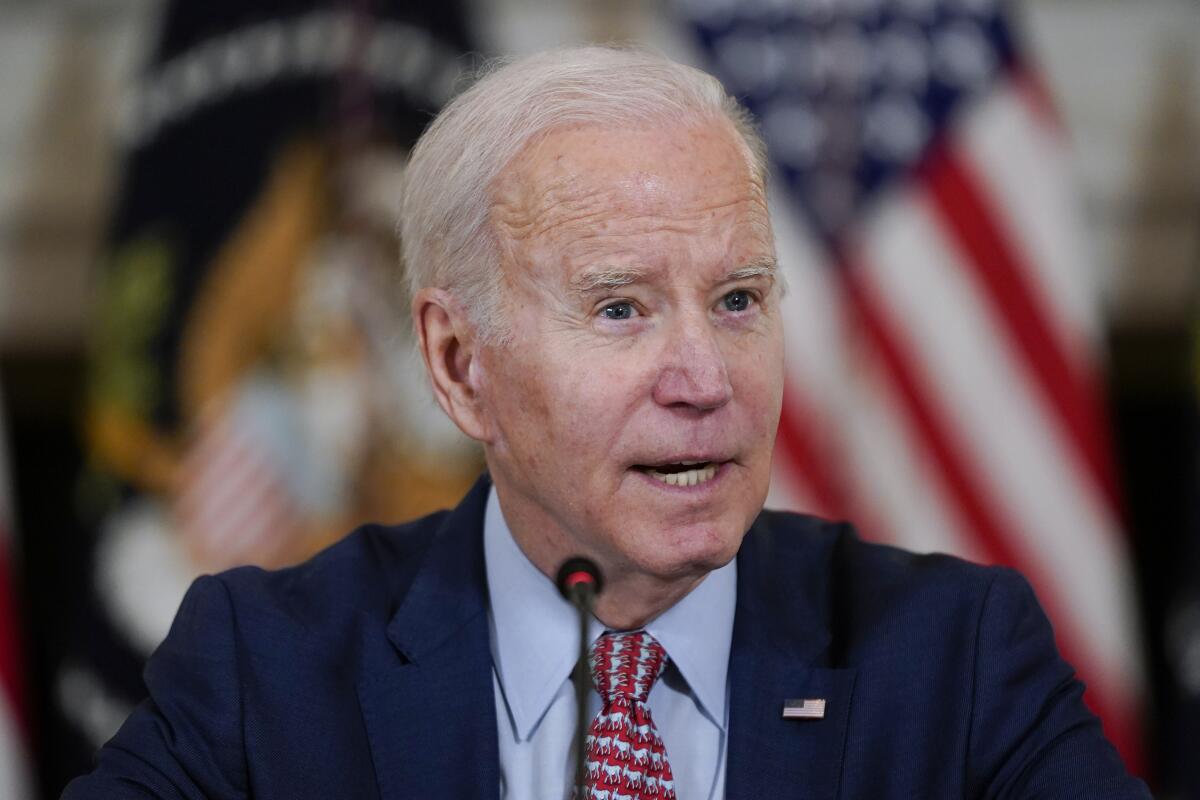Biden ends COVID national emergency after Congress acts

- Share via
WASHINGTON — The U.S. national emergency to respond to the COVID-19 pandemic ended Monday as President Biden signed a bipartisan congressional resolution to bring it to a close after three years — weeks before it was set to expire alongside a separate public health emergency.
The national emergency allowed the government to take sweeping steps to respond to the virus and support the country’s economic, health and welfare systems. Some of the emergency measures have already been successfully wound-down, while others are still being phased out.
The public health emergency — it underpins tough immigration restrictions at the U.S.-Mexico border — is set to expire on May 11.
The White House issued a one-line statement Monday saying Biden had signed the measure behind closed doors, after having publicly opposed the resolution though not to the point of issuing a veto. More than 197 Democrats in the House voted against it when the GOP-controlled chamber passed it in February. Last month, as the measure passed the Senate by a 68-23 vote, Biden let lawmakers know he would sign it.
If the U.S. public health emergency ends, Americans would be vulnerable to a new coronavirus variant that sparks another COVID-19 surge.
The administration said once it became clear that Congress was moving to speed up the end of the national emergency it worked to expedite agency preparations for a return to normal procedures. Among the changes: The Department of Housing and Urban Development’s COVID-19 mortgage forbearance program is set to end at the end of May, and the Department of Veterans Affairs is now returning to a requirement for in-home visits to determine eligibility for caregiver assistance.
Legislators last year did extend for another two years telehealth flexibilities that were introduced as COVID-19 hit, leading healthcare systems around the country to regularly deliver care by smartphone or computer.
More than 1.13 million people in the U.S. have died from COVID-19 over the last three years, according to the Centers for Disease Control and Prevention, including 1,773 people in the week ending April 5.
Then-President Trump’s Health and Human Services Secretary Alex Azar first declared a public health emergency on Jan. 31, 2020, and Trump declared the COVID-19 pandemic a national emergency that March. The emergencies have been repeatedly extended by Biden since he took office in January 2021, and he broadened the use of emergency powers after entering the White House.
More to Read
Sign up for Essential California
The most important California stories and recommendations in your inbox every morning.
You may occasionally receive promotional content from the Los Angeles Times.











